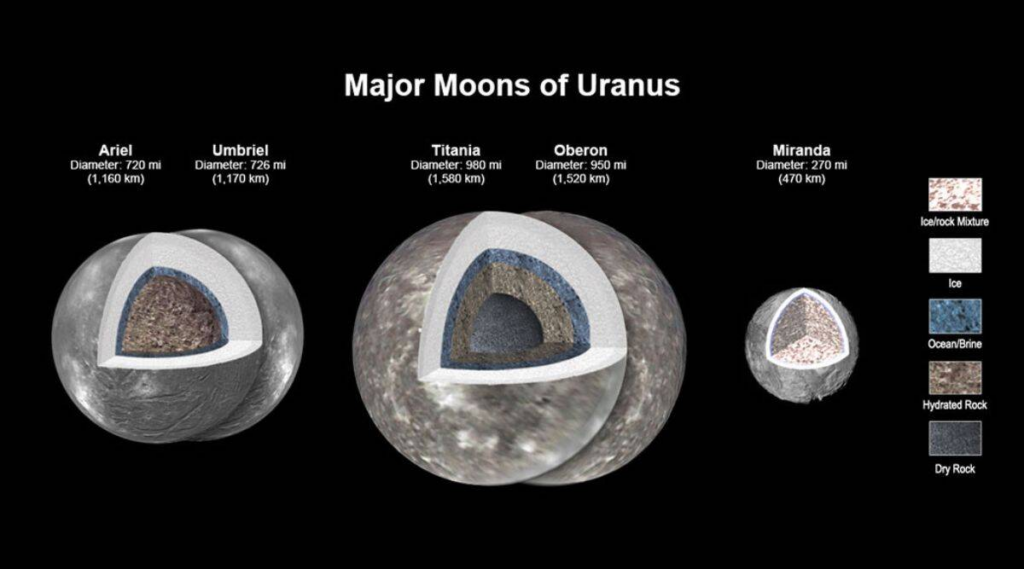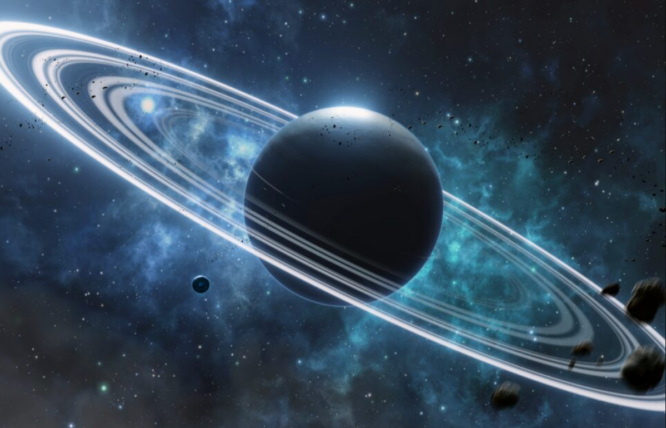NASA scientists have concluded that four of Uranus’ largest moons may contain an ocean stratum between their ice cores and crusts, based on a re-analysis of Voyager data and new computer modeling.
The Journal of Geophysical Research article describes the evolution of the composition and structure of all five main Uranus moons: Ariel, Umbriel, Titania, Oberon, and Miranda. The study suggests that four of these moons may contain oceans that are hundreds of kilometers deep.
Uranus and its satellites
There are 27 moons that orbit Uranus. The diameters of the four largest range from 1,160 kilometers (Ariel) to 1,580 kilometers (Titania).
Long ago, scientists believed Titania, the largest moon of the planet, would be the most likely to retain its internal heat. In general, they believed that the other moons were too small to retain enough heat to prevent an ocean from freezing. This retention of internal heat from radioactive decay will be a significant factor, as Uranus is a relatively minor heat source.
“When it comes to small entities — dwarf planets and moons — planetary scientists have previously discovered evidence of oceans in several improbable locations, including the dwarf planets Ceres and Pluto and Saturn’s moon Mimas.
Consequently, there are mechanisms in action that we do not completely comprehend. Julie Castillo-Rogez, the paper’s primary author, said in a press release, “This paper investigates what those could be and how they are relevant to the many bodies in the solar system that could be rich in water but have limited internal heat.”

In search of the Uranus moon’s oceans
The study re-evaluated the findings from the 1980s when NASA’s Voyager 2 flew by Uranus. It also examined observations made on the ground. Using this information, the researchers developed computer models that incorporated additional information from the Galileo, Cassini, Dawn, and New Horizons spacecraft.
The researchers estimated the porousness of the surfaces of the Uranian moons based on this modeling. They discovered that their insulation is sufficient to retain the quantity of internal heat required to support an internal ocean.

Additionally, they discovered a potential source of heat in the mantles of the moons, which discharges heated liquid. This scenario is especially probable for Titania and Oberon, where the oceans could be heated enough to sustain life, according to NASA.
However, internal heat is not the only factor that could contribute to a subsurface ocean on the Moon. Additionally, the research indicates that chlorides and ammonia are abundant in the oceans of the four largest Uranian moons. Ammonia is a known refrigerant agent. The water’s ions could also function as an antifreeze.
Future space missions, such as those involving NASA’s envisioned SWIM concept swimming machines, could investigate the composition and habitability of subsurface oceans.

